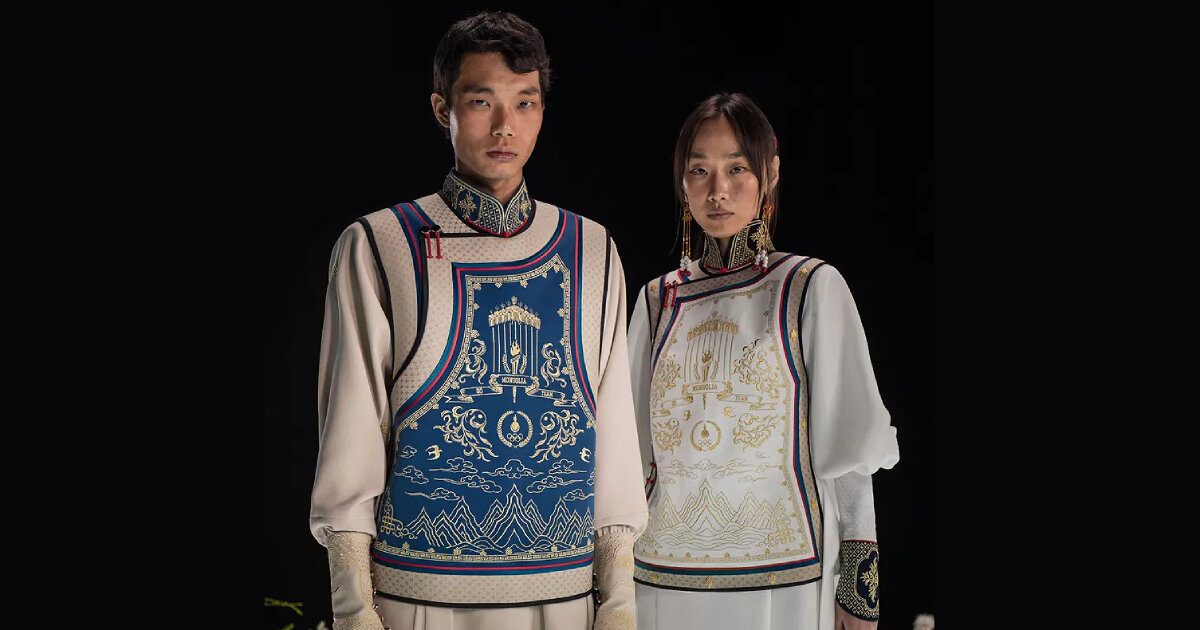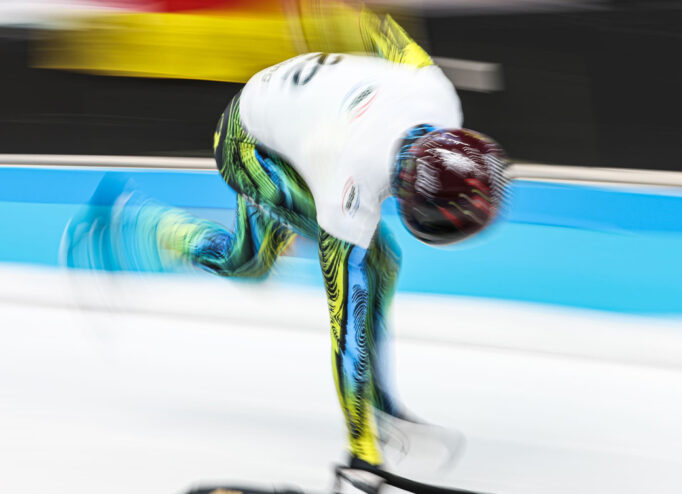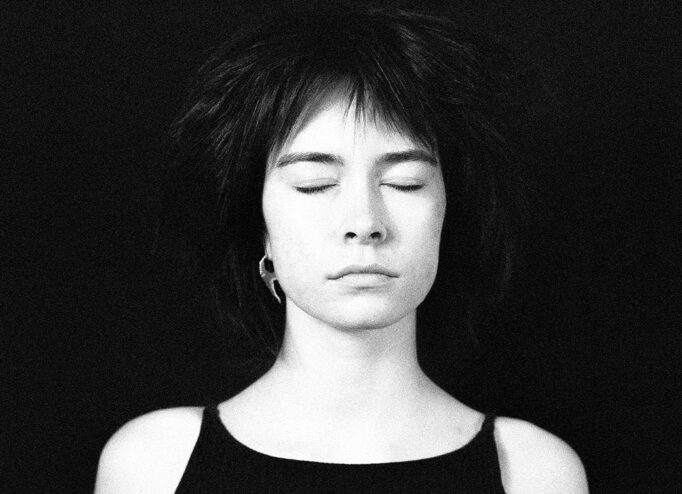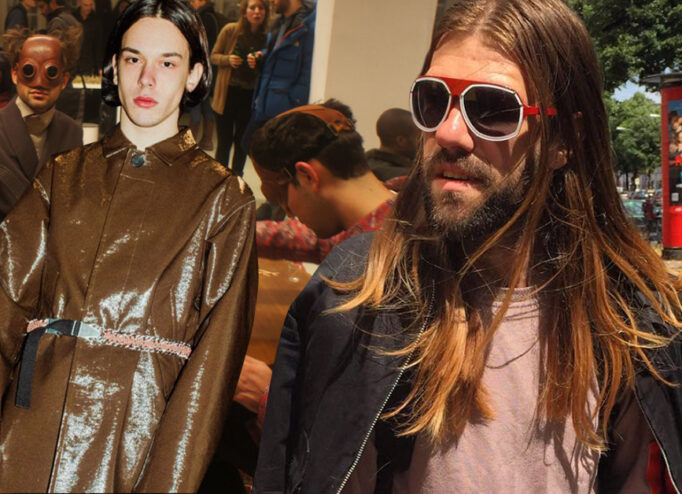People are following this year’s Paris Olympics not only because of the sporting events, but also because of the fashion. For example, the parade uniforms by Michel&Amazonka for the Mongolian national team were featured in all the key fashion media, from Vogue to WWD. And American Olympic champion Michael Johnson retweeted the photo with the words: ‘Just give them the gold for best uniform’.
DTF Magazine talked to the brand’s CEO Munkhjargal Choigaalaa about the traditional elements of the uniform, the restrictions brands face when sewing Olympic uniforms, and asked her about Mongolia’s key fashion events
Briefly about Michel&Amazonka
Michel&Amazonka was founded by three sisters in 2015. Michel Choigaalaa and Amazonka Choigaalaa designs the clothes, while Munkhjargal heads the brand.
The company has several main clothing lines: children’s, basic, cashmere and wool, pret-a-couture, and deel, which features items with traditional Mongolian elements. As the website notes, Michel&Amazonka ‘combines design, experimentation and research’, and ‘the collections express the essence of Mongolian tradition and culture in the contemporary light’.
In 2024, for the third time, the designers created Olympic uniforms for the national team (before that, they created uniforms for the Tokyo 2020 Summer Games and the Beijing 2022 Winter Games). The 2022 flagbearers’ uniforms were chosen for the Olympic Museum.
In 2022, the brand created uniforms for stewards and stewardesses of MIAT Mongolian Airlines.
‘We minimize our design to fit the perception of local and other nationalities’
— This is the third time you have designed uniforms for the Olympic team. How did your cooperation with the Mongolian National Olympic Committee begin?
— The collaboration with the National Olympic committee began in 2019 when the Ministry of Education ,Culture, Science and Sports (the name is changed since) announced competition for Olympic Uniform for Tokyo 2020 amongst Mongolian designers. It was May of 2019.
We remember there were 7 shortlisted designers in the competition and only 2 remained in the final, us and another company who produced previous several Olympics. In the end we were selected to design and manufacture the uniforms.
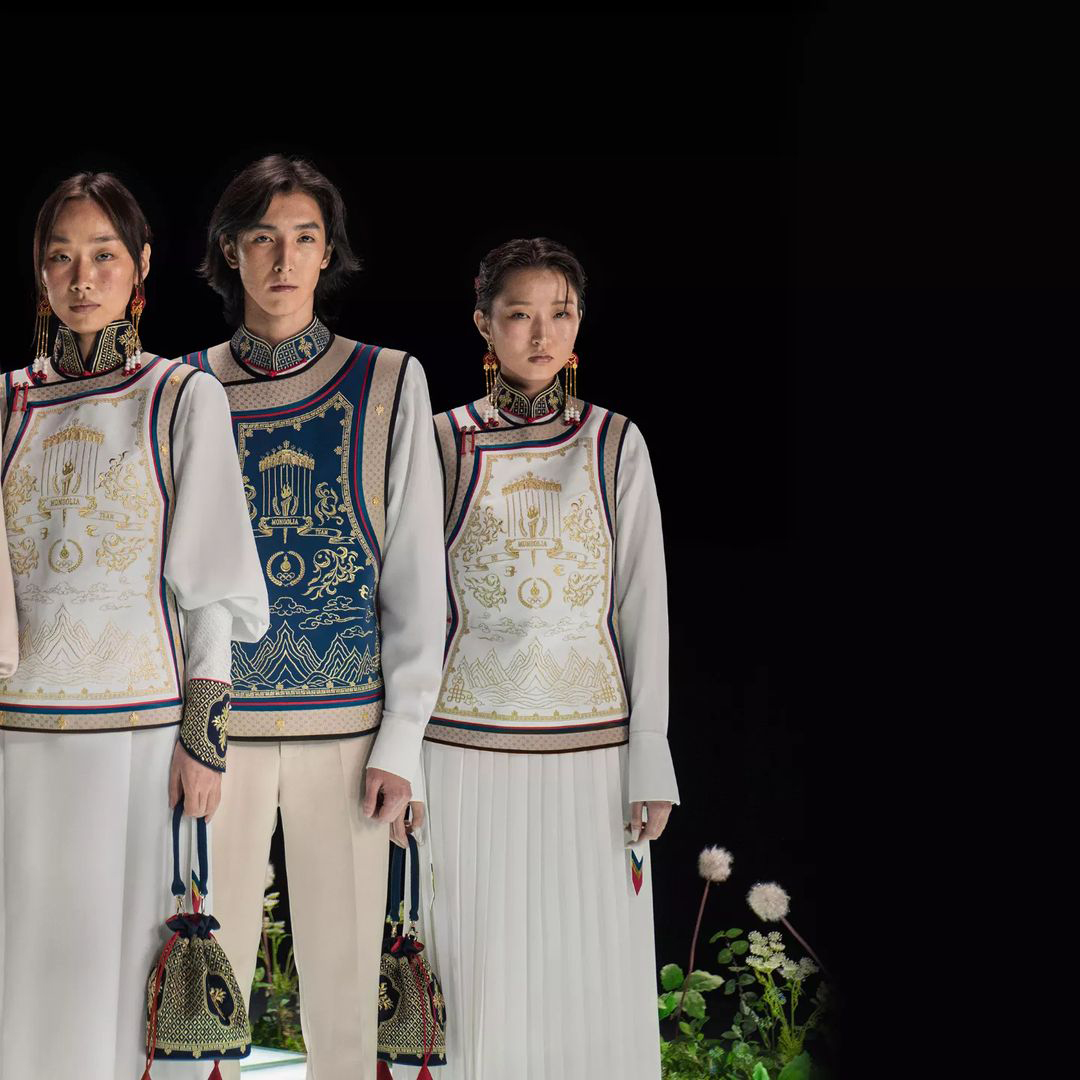
— What were your main principles when you created the uniforms for the 2024 Olympics?
—We do a lot of research on our clothing tradition. Our national costume is one of the most important aspects of any celebration in Mongolia. Therefore our uniforms represent our national costume that we wear during our olympics “Naadam”. Naadam is similar to the Olympics because Mongolians travel many kilometers to compete in National contests like horse race, archery, wrestling and others in Ulaanbaatar.
We thought, “Why can’t we do the same with the World Olympics?” It has the same meaning. So we worked on the designs considering factors like location, weather, importance, trend, comfort and visual attractiveness.
Our traditional clothes are colorful and extravagant which is not suitable for a sports arena. So we minimize our design to fit the perception of local and other nationalities but added intriguing elements on the uniform to draw attention.
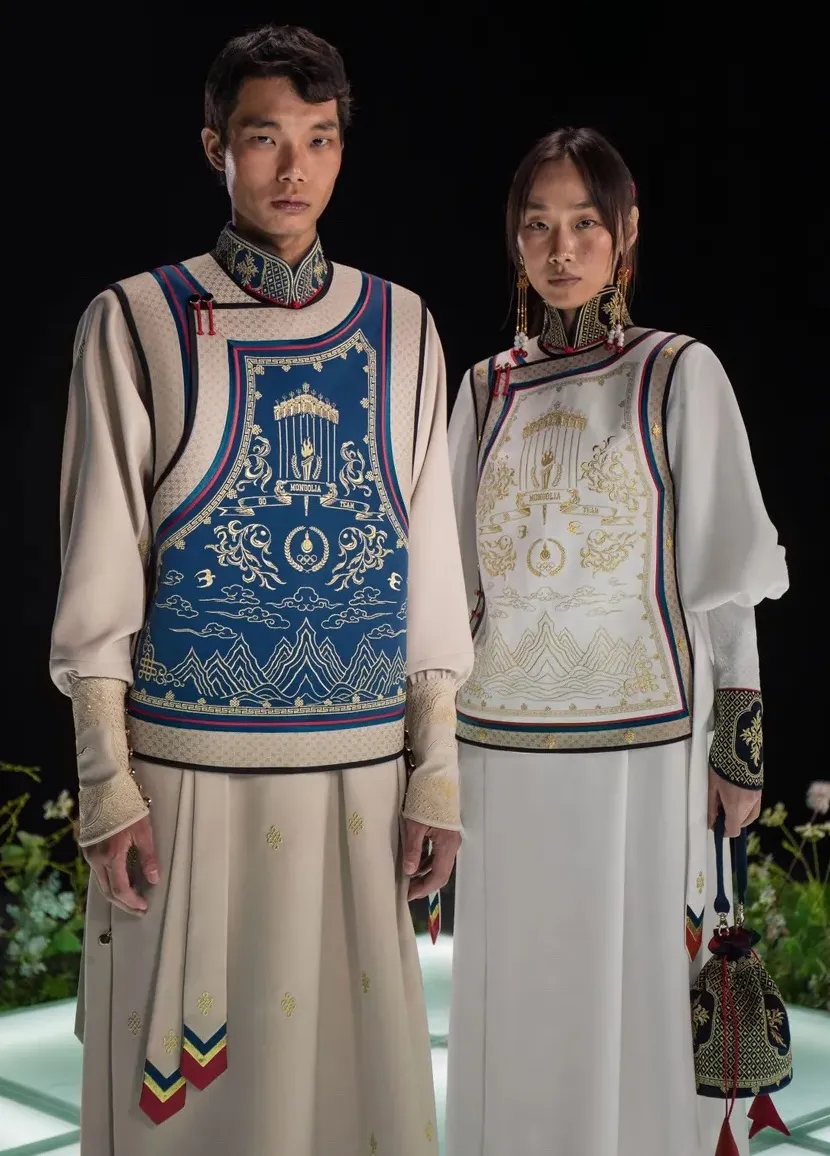
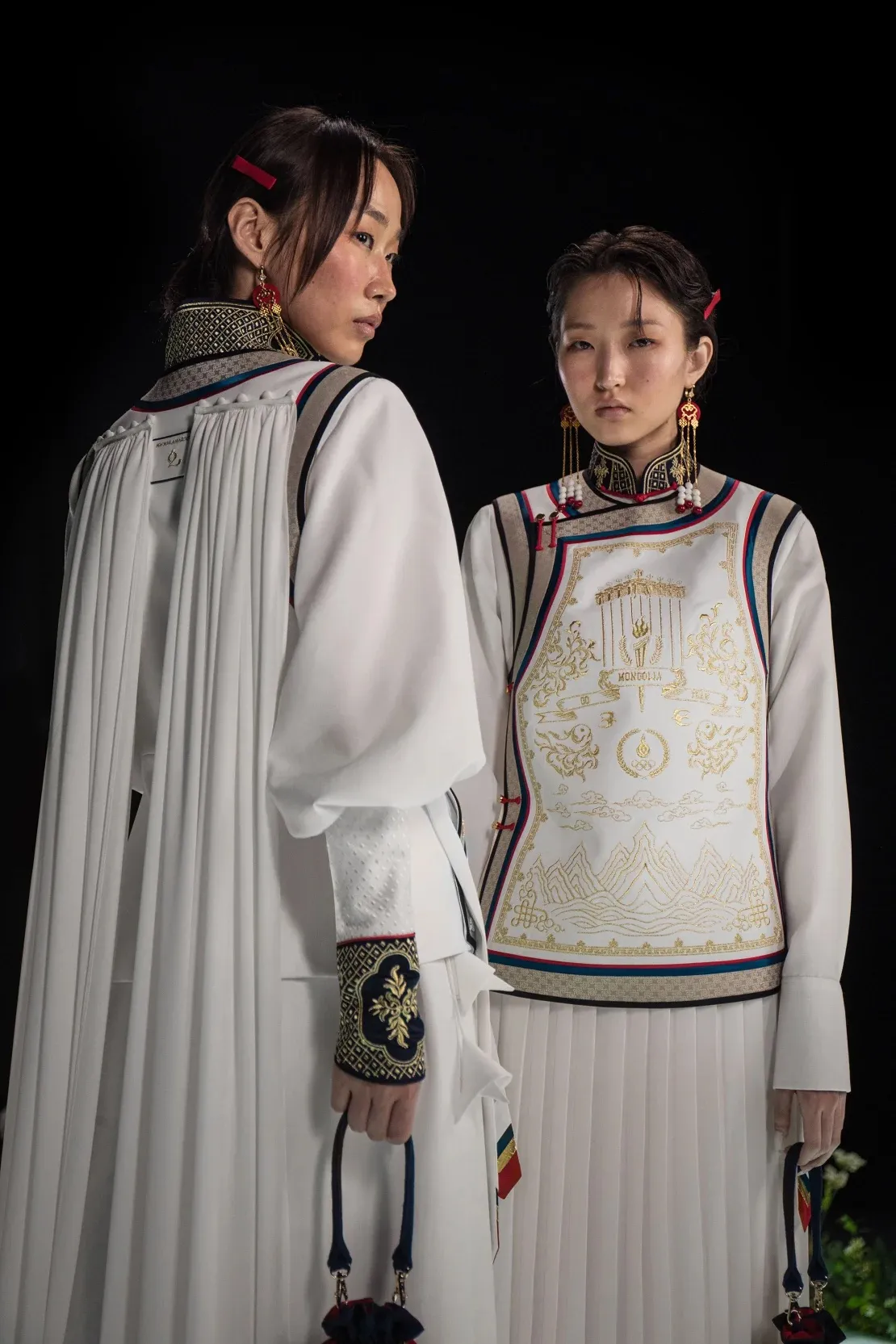
About the details of the uniform
— You have used a combination of the traditional Mongolian Deel outfit and vest, which is also quite popular for the Naadam festival, in the uniform for the Olympics. Among the other elements of the uniform are skirts, shoes, and pants. Are there any other elements that show traditional Mongolian elements? Maybe shoes, handbags, or earrings?
— Flag bearer’s shoes are called Hunnu(Huns) shoes and are made of leather. Hunnu are our ancestors who lived from the 3rd century BC to the late 1st century AD.
The flag bearer’s hat is actually called Janjin malgai or the General’s hat in Mongolia. We noticed foreign media called it a Buryat hat. But it is not actually called this way. We believe it’s a hat that was worn by Sukhbaatar, The general who led us to gain our independence in 1911.

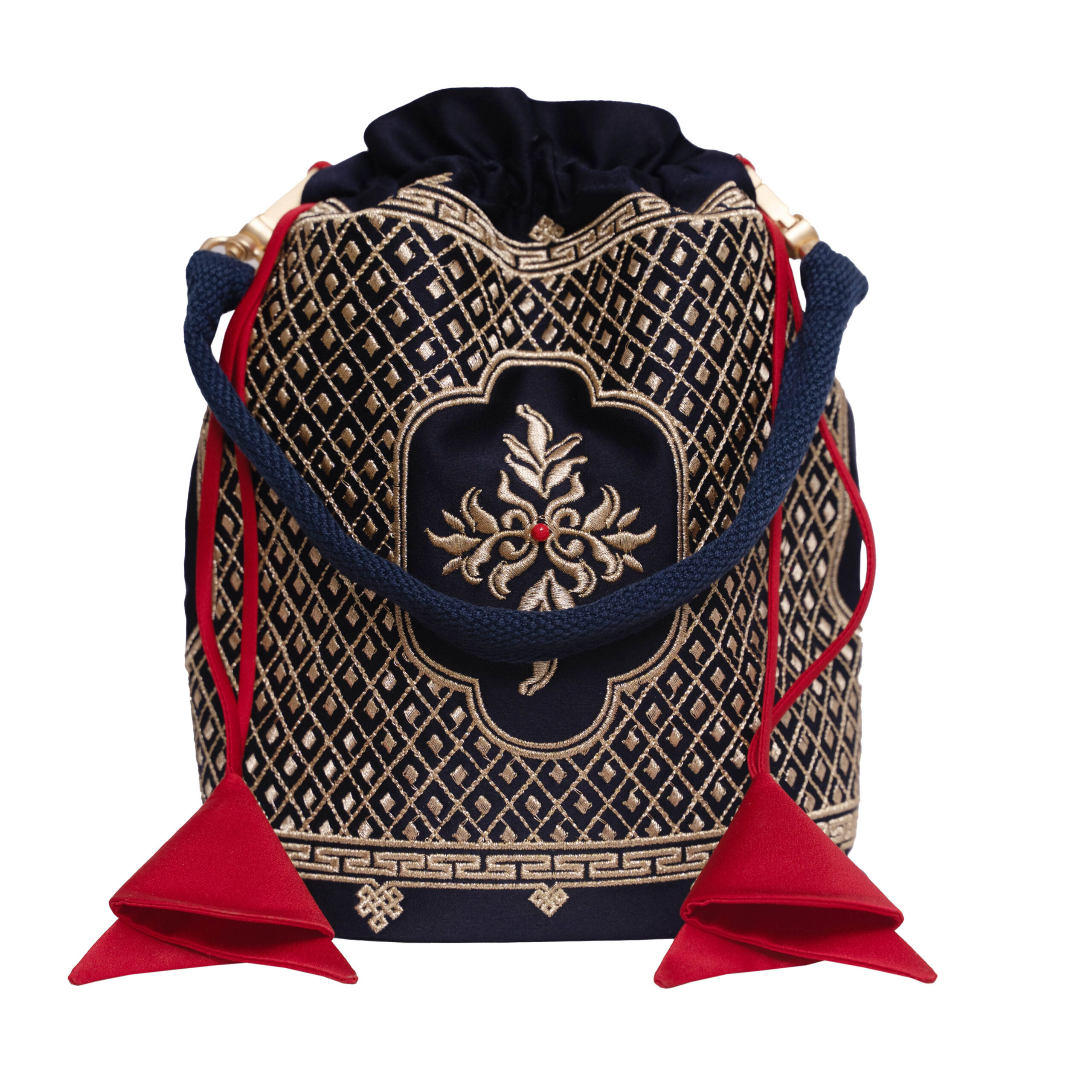
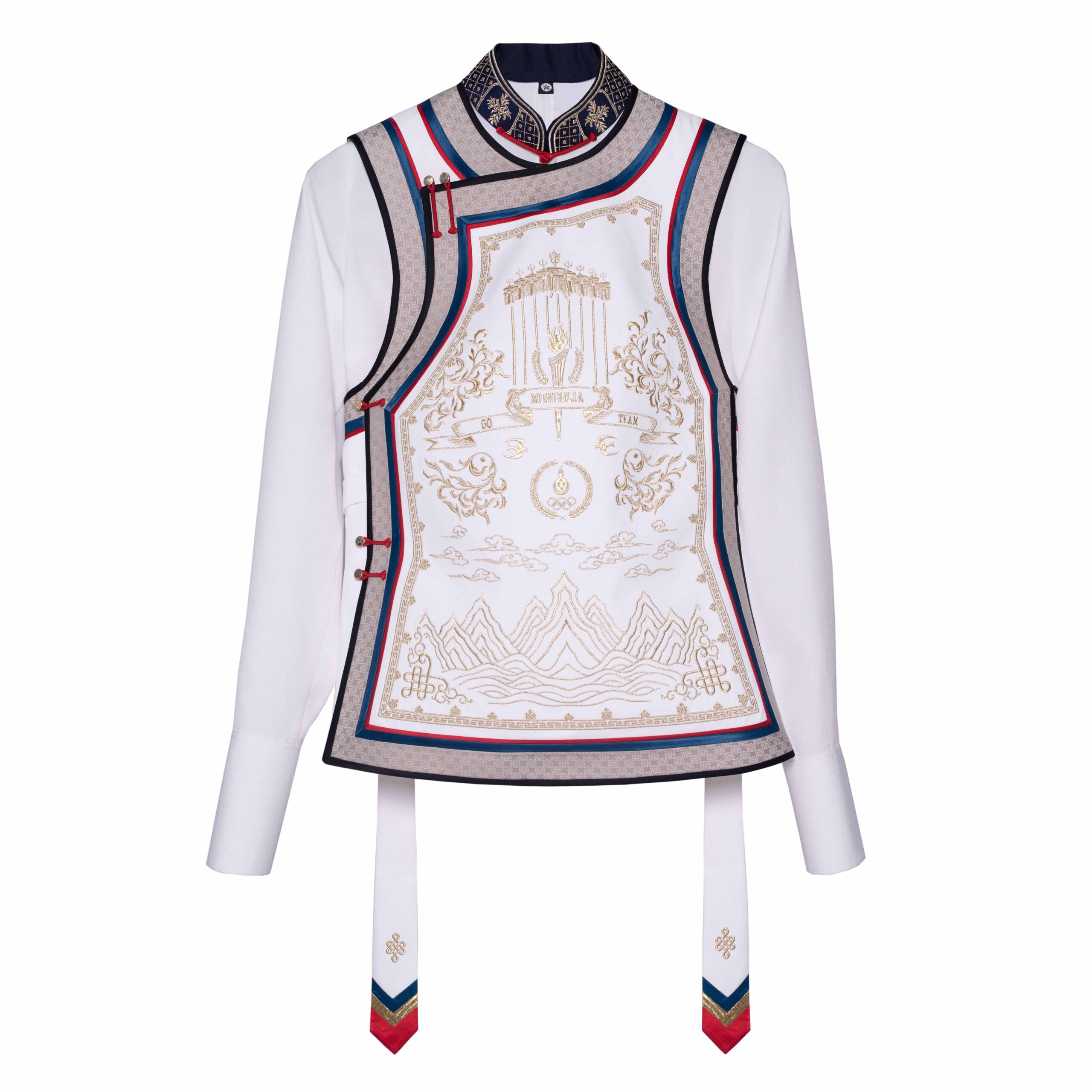
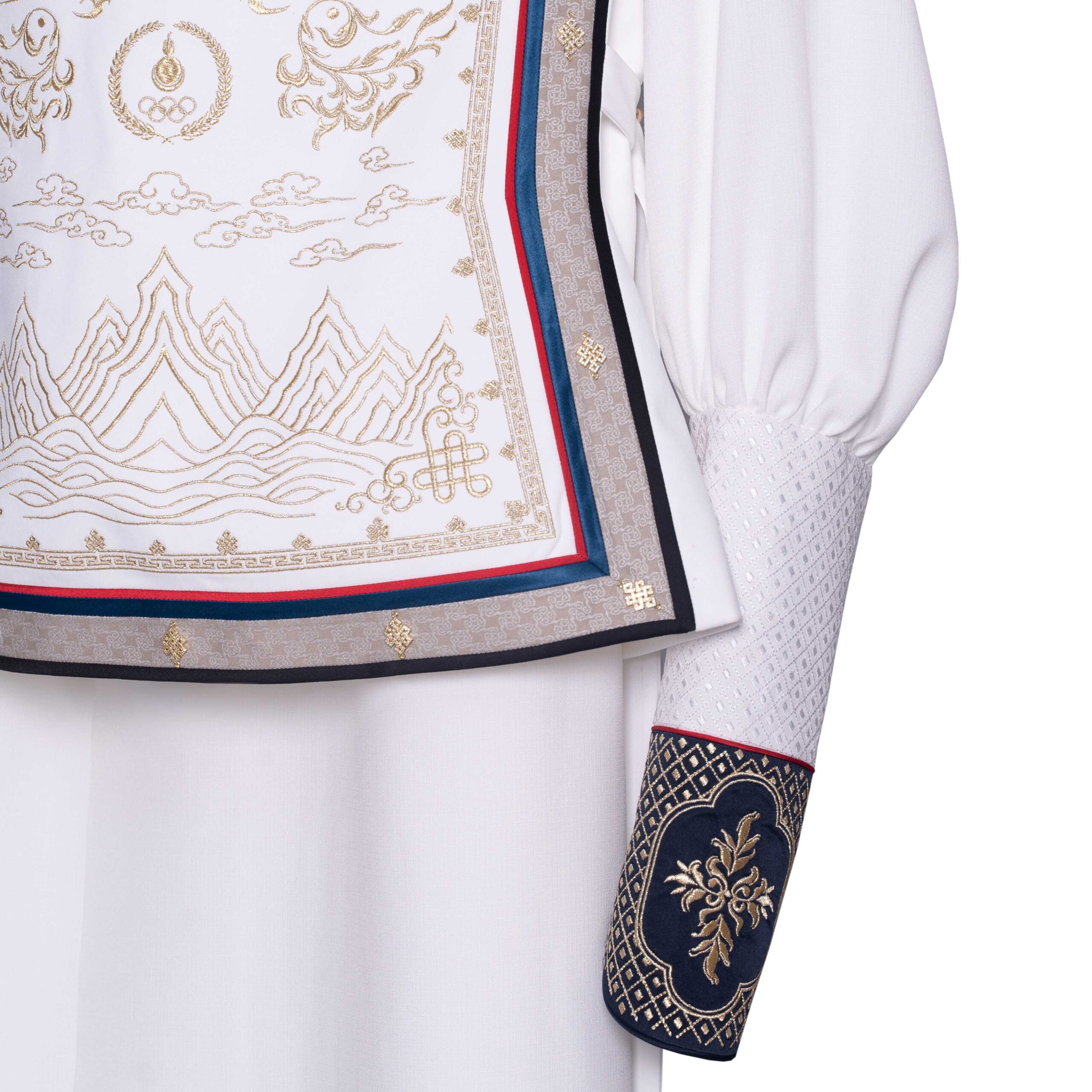
The earrings are long and have traditional patterns. Mongolians usually wear long, sometimes very long earrings because it helps the women to have a slimmer face and longer neck. The handbag has 13th century queens’ embroidery patterns just like the collars of the uniform.
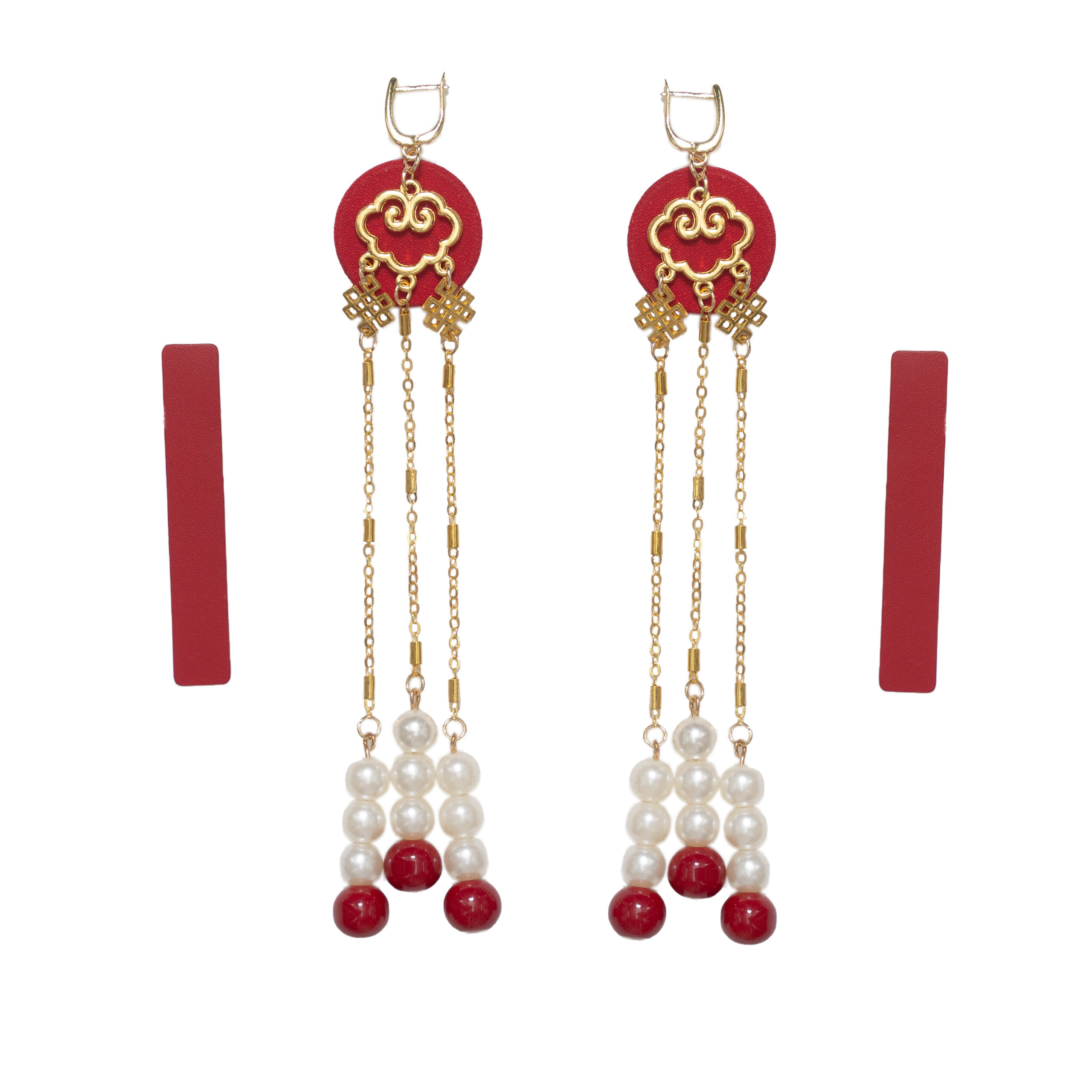
— You also said you used fabrics that were more lightweight and thinner than usual. What kind of fabrics did you use, and how much more difficult was it for you to work with them?
— Mongolian deels are usually made of silk, wool, cotton or cashmere fabrics which are more suited to the local environment and tradition.
But for Paris we had to consider the humidity, heat, comfort, trend and color. So we used cotton, crepe, chiffon and thin silk for them.
It wasn’t very difficult to work with them because we use these materials for other designs.
‘We had to complete all the uniforms in 3 months’
— And in general, what was the most challenging thing for you about creating the Olympic uniform?
— The hardest part is to come up with the designs. Because the Olympic committee and athletes always have their say and change the initial design, sometimes several times.
Paris Olympics uniforms were challenging because of time constraints. Initially, we were not not selected as the official outfitter this year. But suddenly the selected company canceled its participation therefore The Mongolian National Olympic committee chose us to be the official outfitter for the Paris 2024 Olympics. So we had to sign our agreement in the beginning of April, 2024 and had to complete all the uniforms in 3 months.
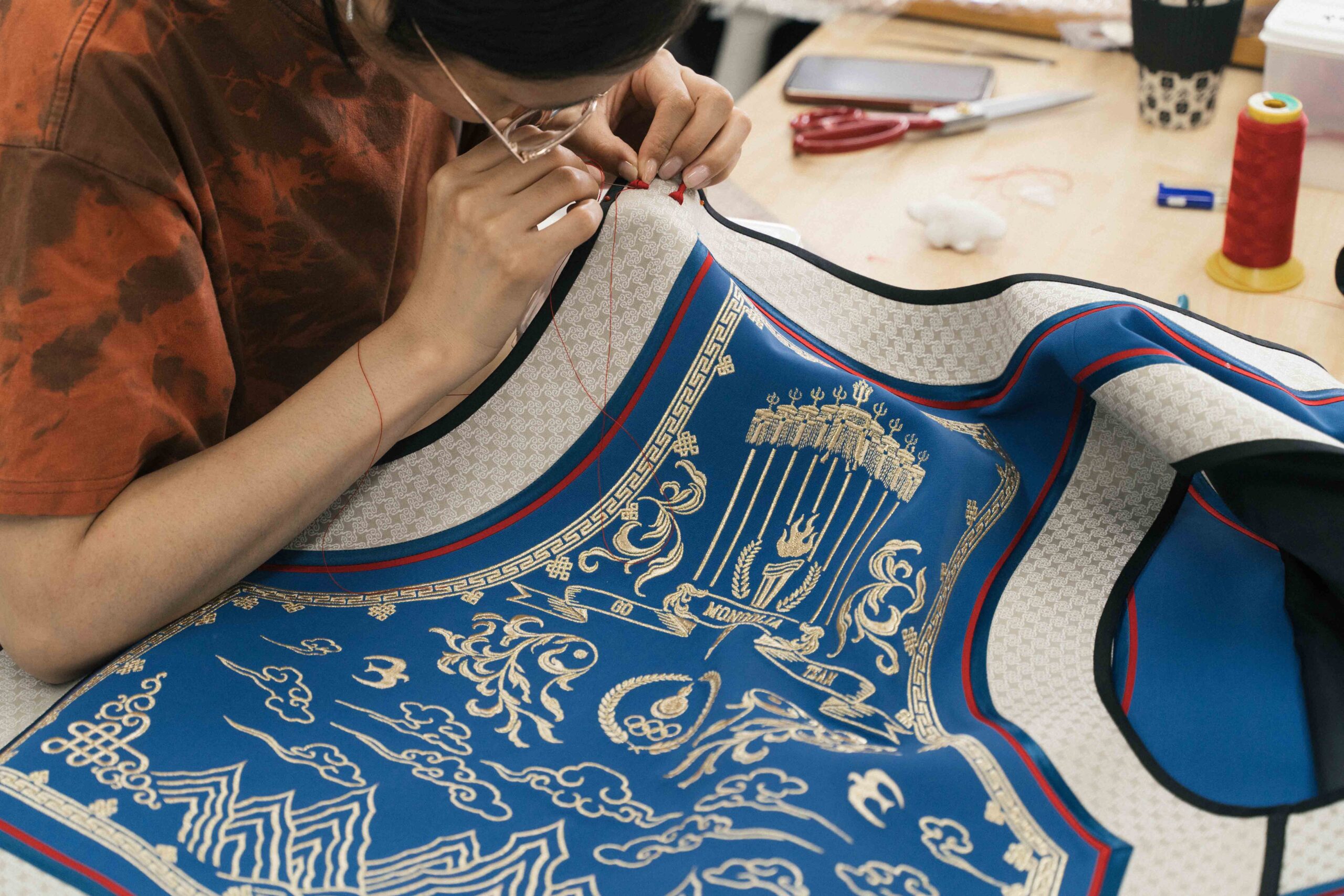
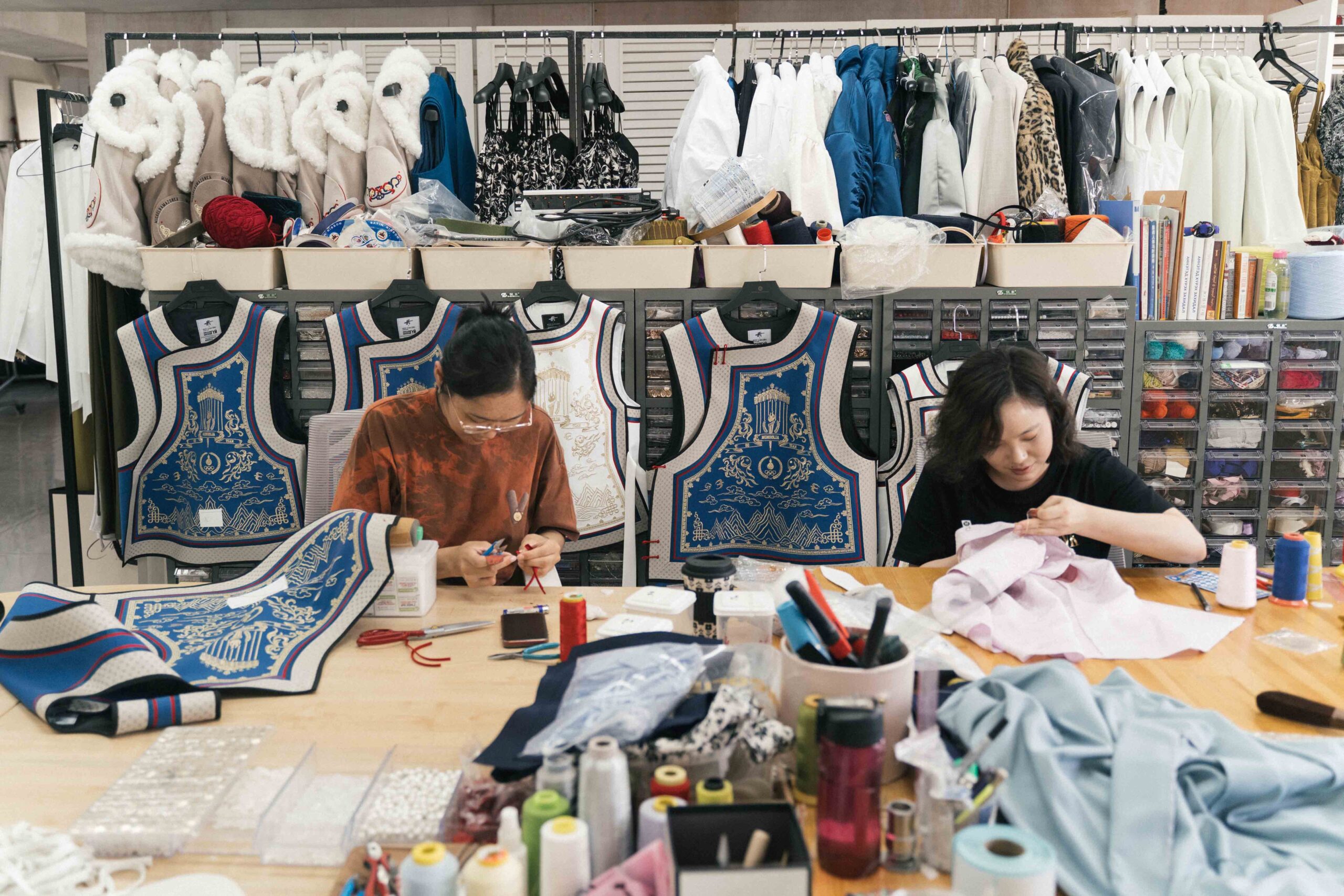
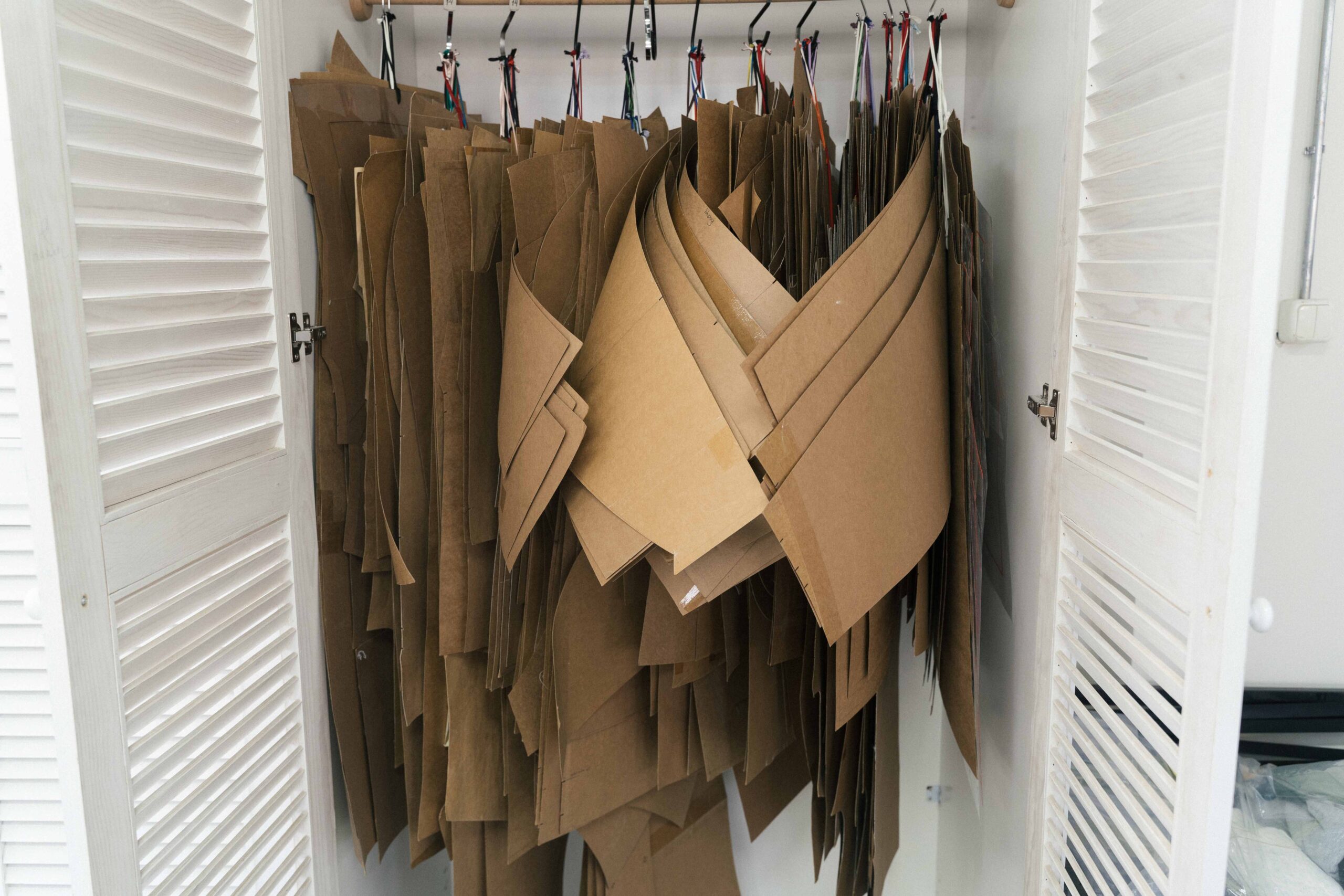
— When you were working on the uniforms for the opening ceremony, did you have any restrictions beyond the fact that you had to use logos and emblems of a certain size and not use words or slogans related to national identity?
— We did have some restrictions on which words should be used. The initial design had The Eiffel tower on the vest but it was declined and we changed it to a mountain.

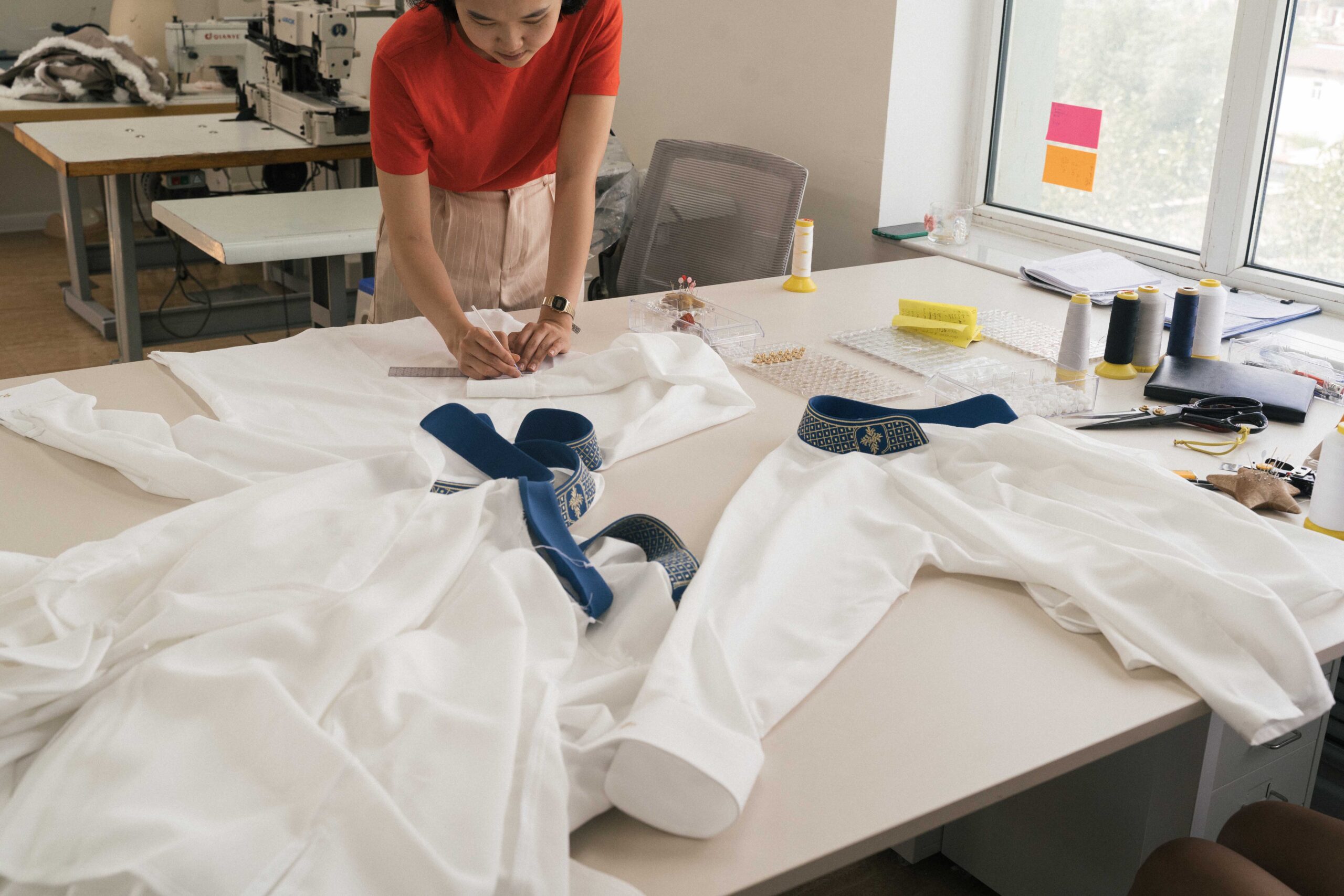
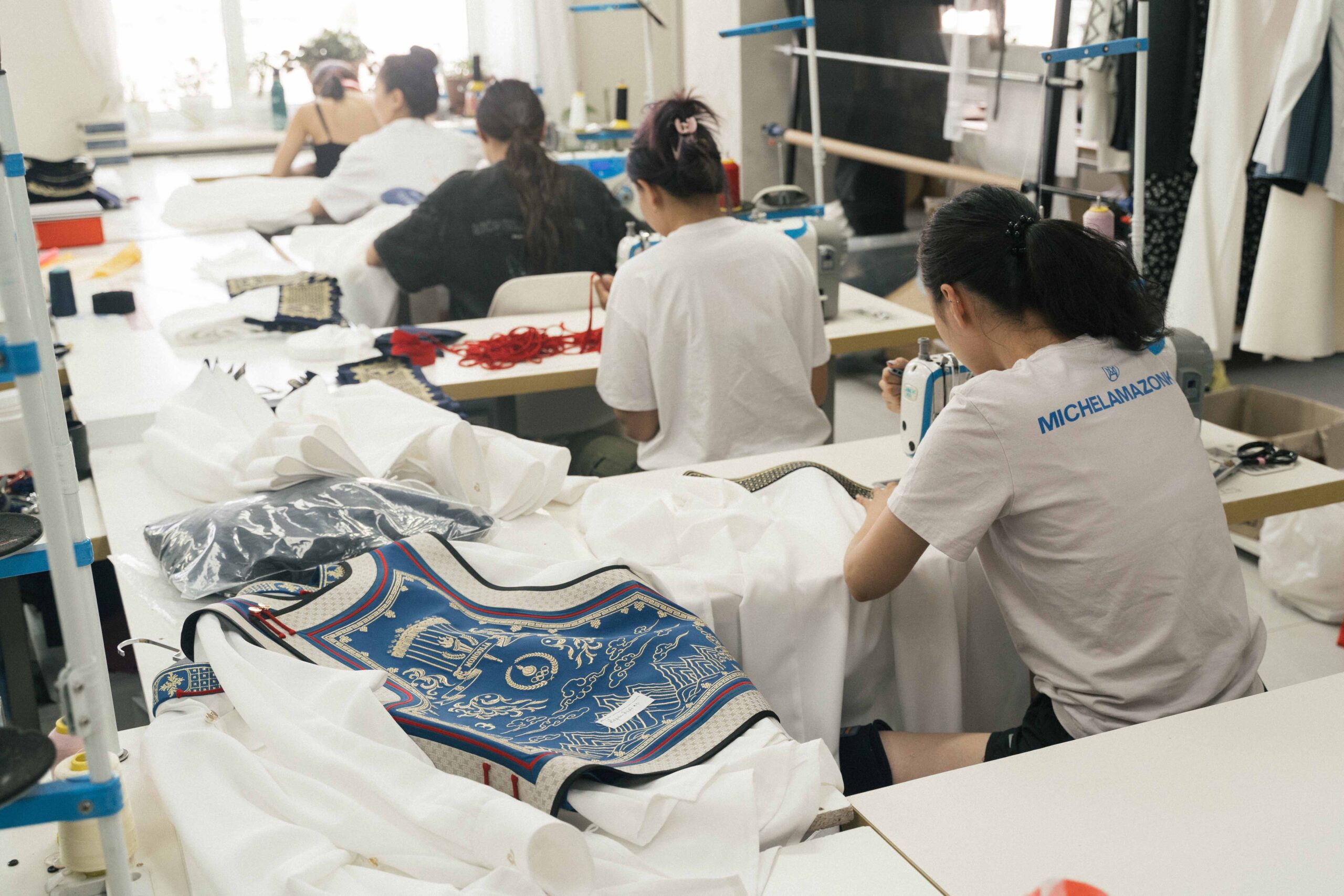
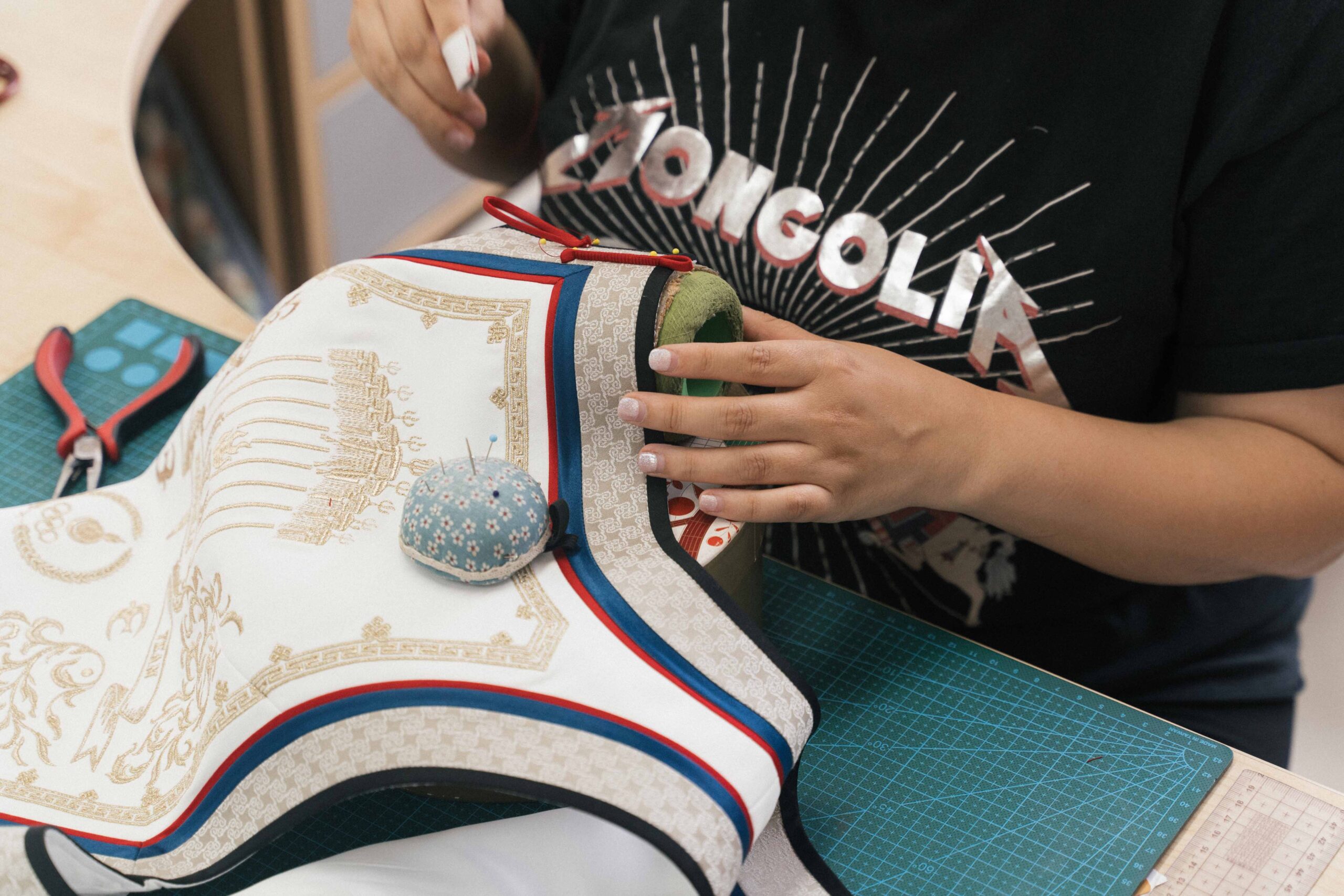
— Usually designers or brands that work with Olympic uniforms complain about the difficulty of creating a perfect fit because athletes usually have non-standard parameters. Have you had such difficulties? And what were they like?
— When we worked with athletes in 2020 we faced the challenge of perfect fit and redoing some uniforms. But this year we took measurements of all athletes and created them without problem. Experience helped us to avoid this issue.
‘Many more people are looking at us and they are expecting more from us’
— The parade uniform you created for the 2024 Olympics was listed among the best uniforms by key fashion media. How has this popularity influenced your brand?
— We are getting a lot of interview requests and orders from Mongolia and abroad. Now this means we need to increase our production by hiring more people. Also we need to do good designs for the future because many more people are looking at us and they are expecting more from us.
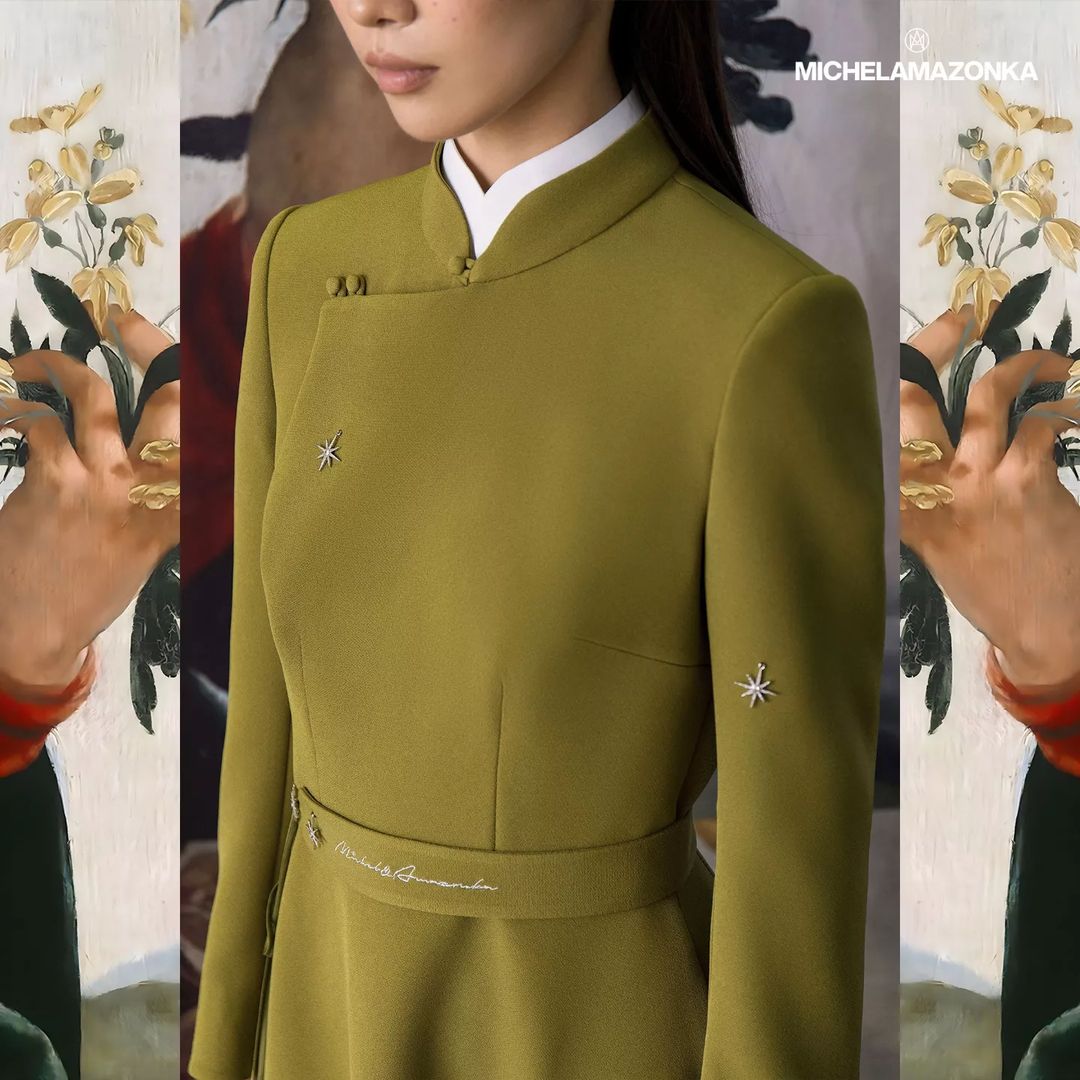
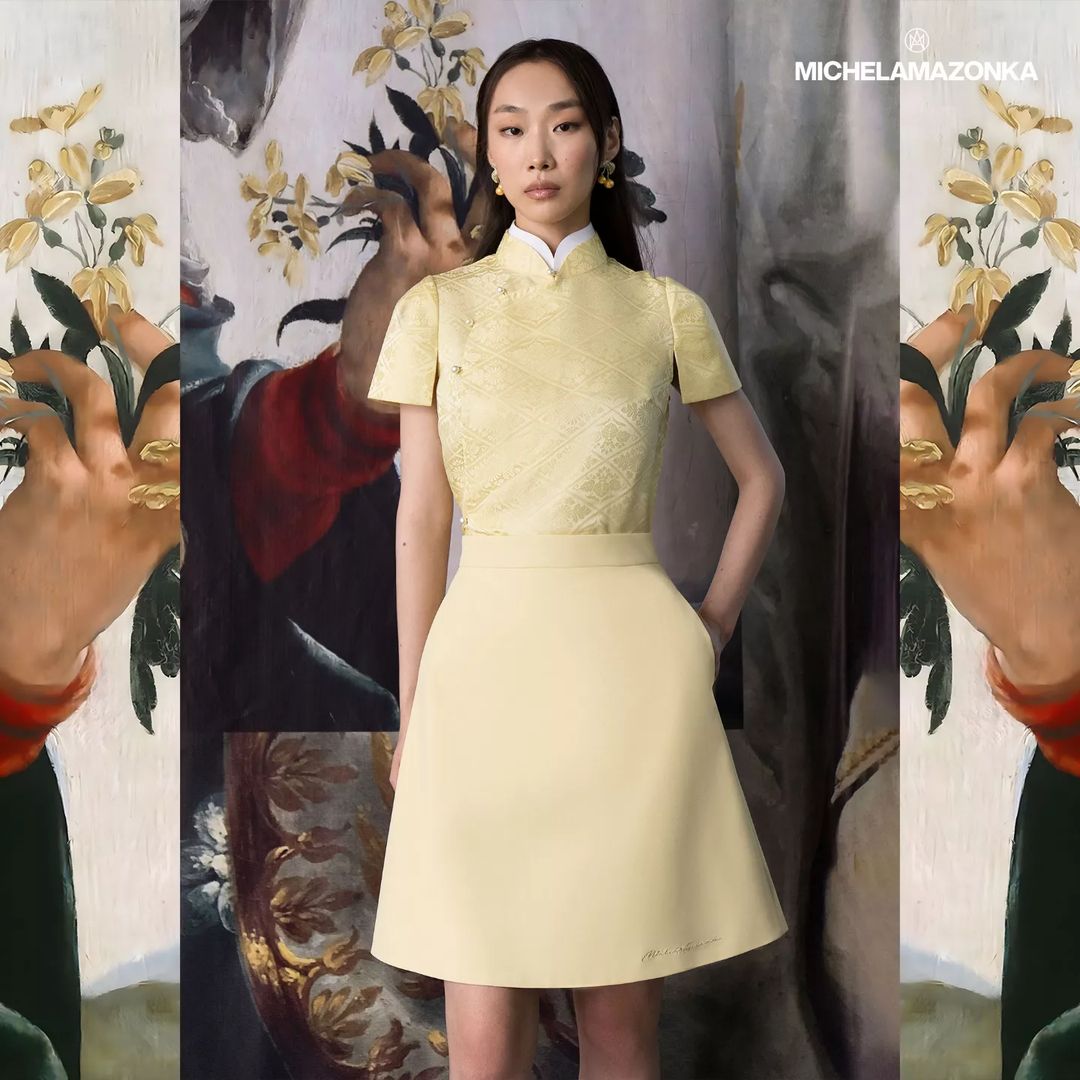
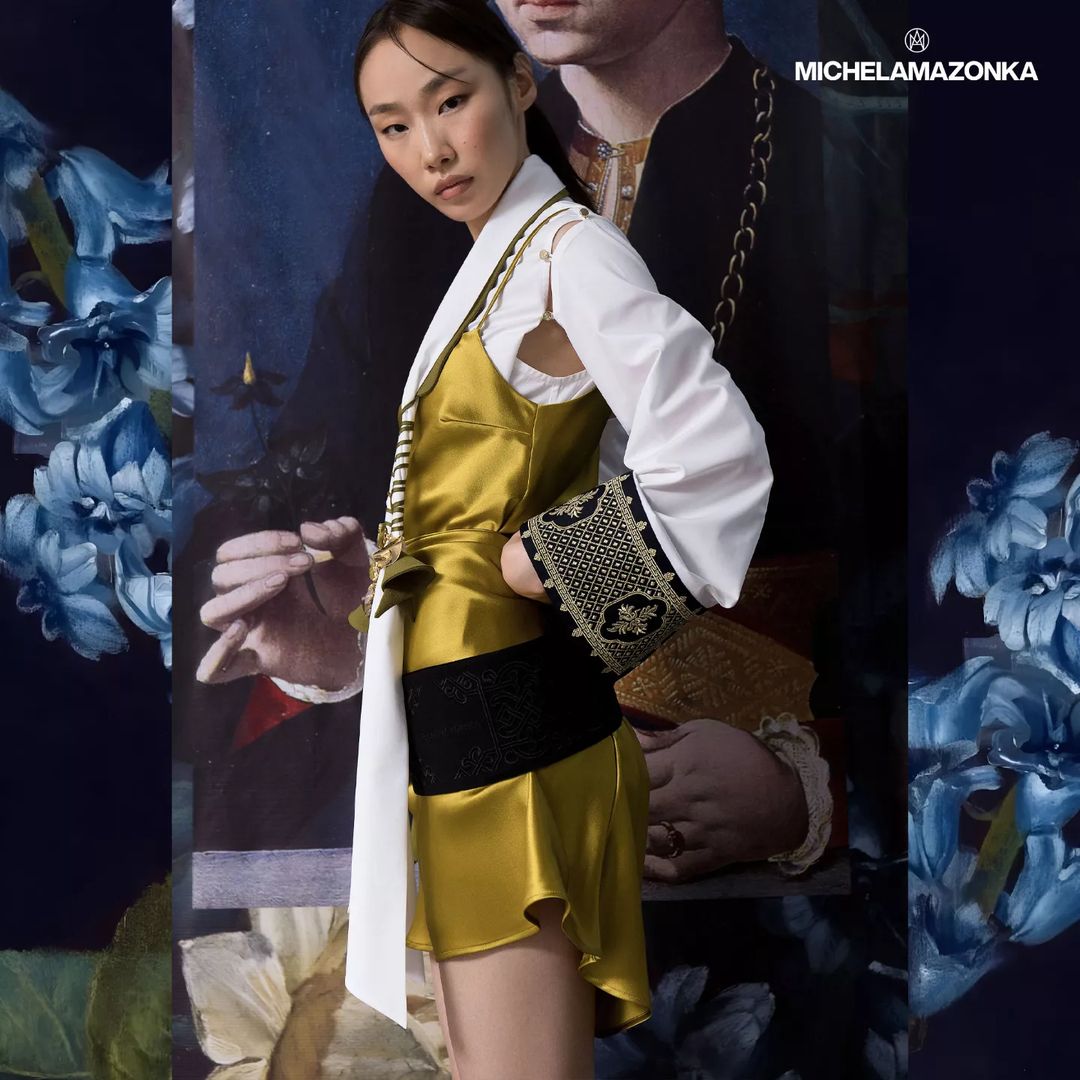
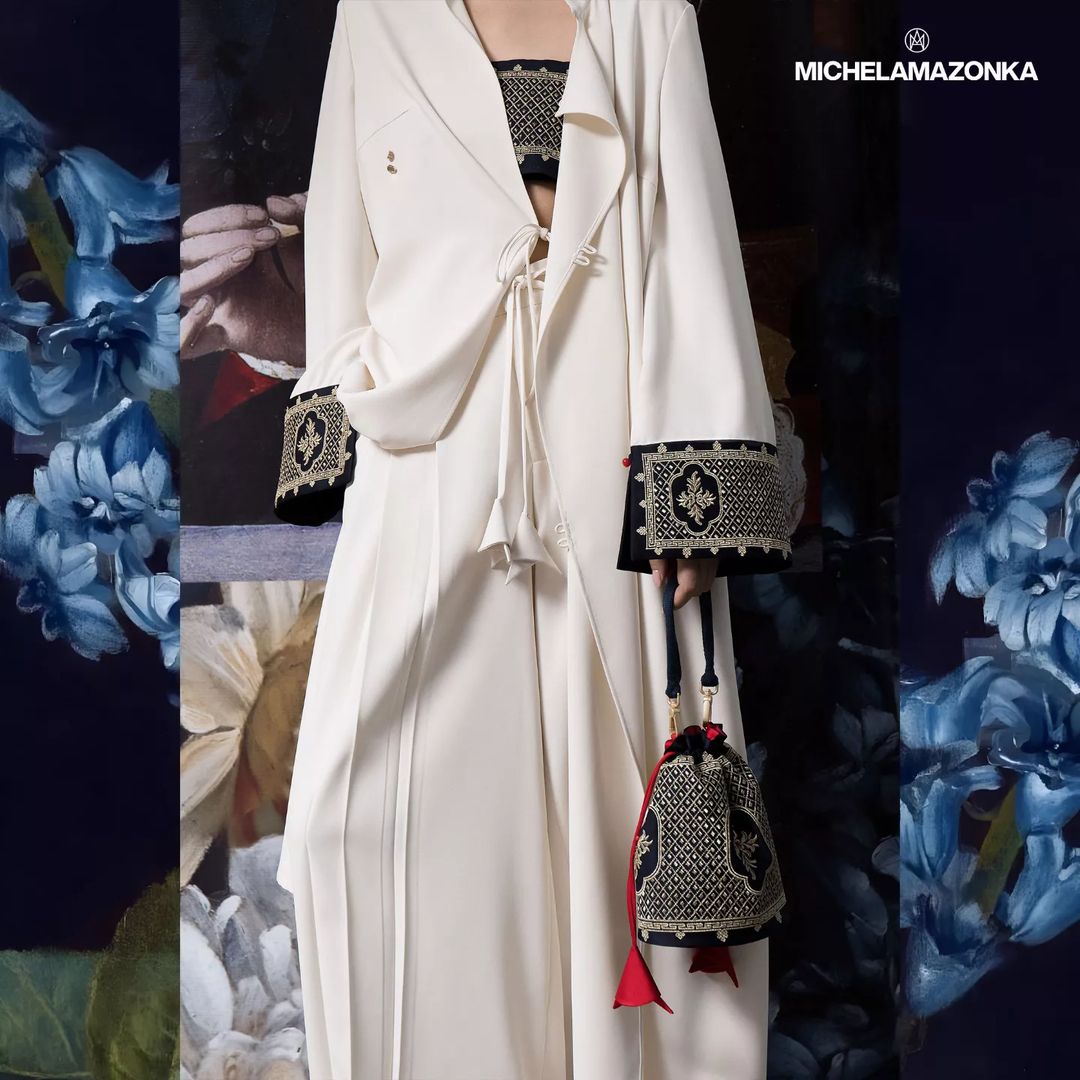
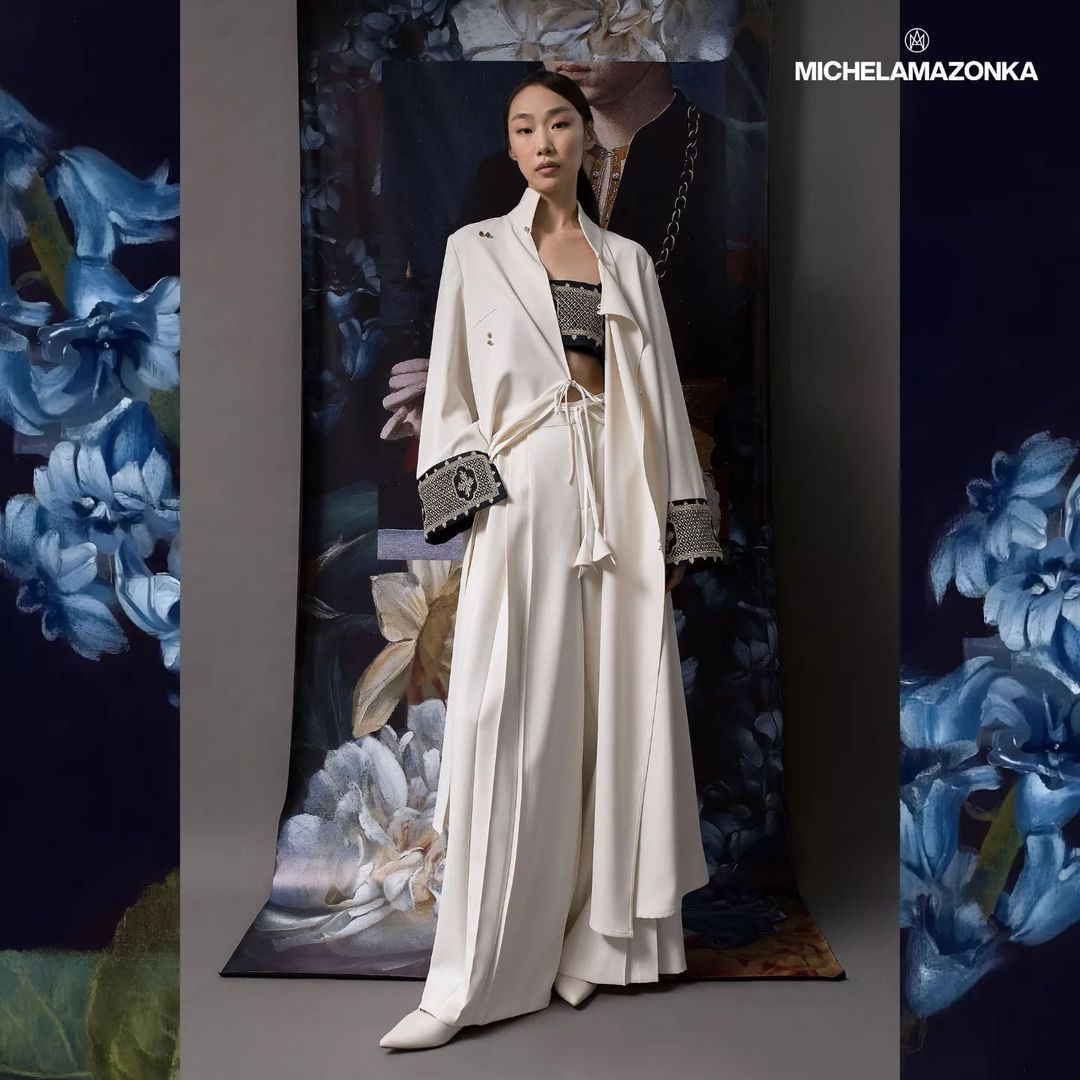
— We don’t know much about Mongolia’s fashion industry. Name 5 key events or names that you think people should follow to learn more about.
— Naadam — version of Olympics in Mongolia, the most widely watched festival among Mongols and is believed to have existed for centuries in one fashion or another. The variation of clothes is limitless.
Tsagaan sar — the first day of the year according to the Mongolian lunisolar calendar when everybody wears new attire symbolizing a new beginning and behind all the old and bad.
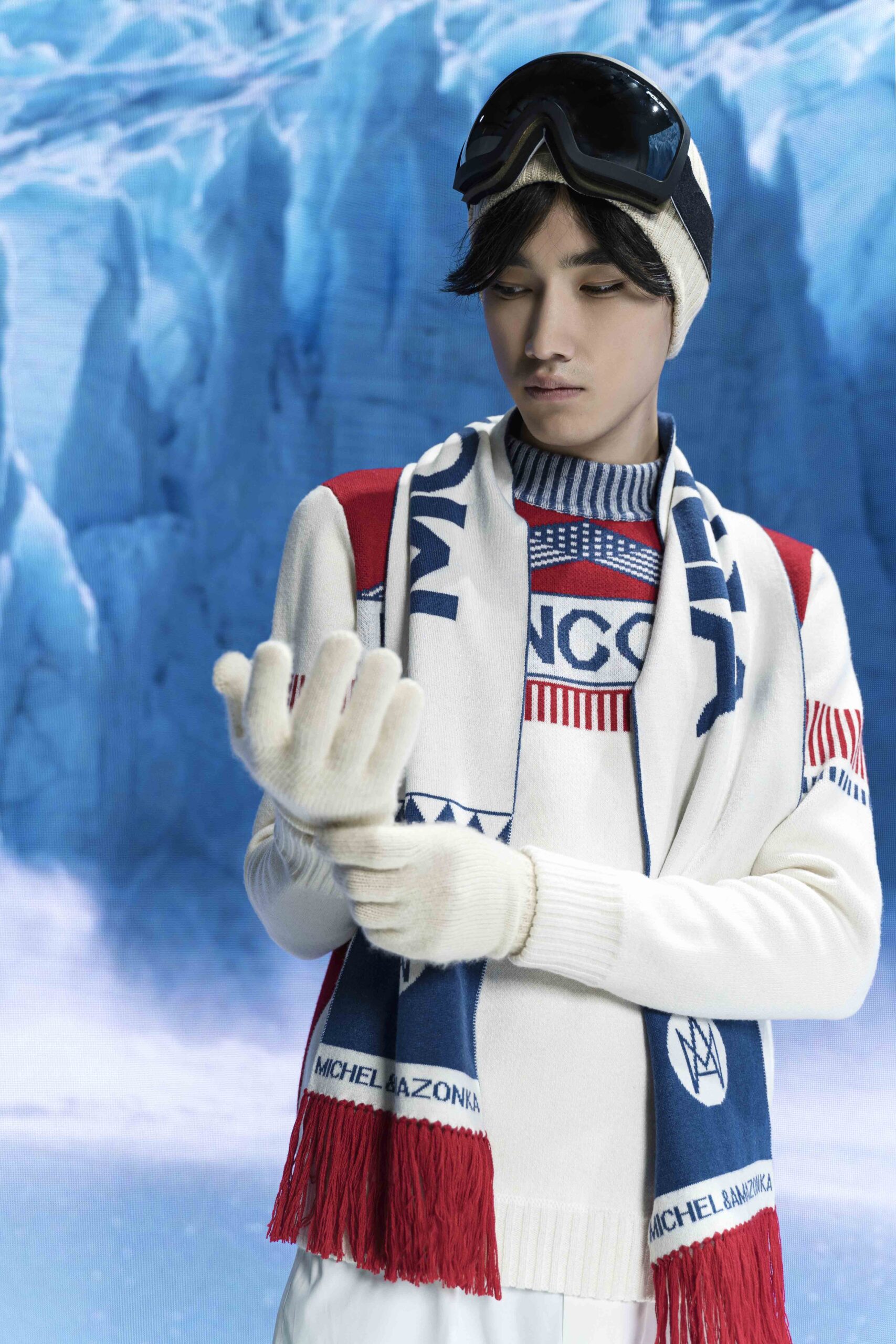
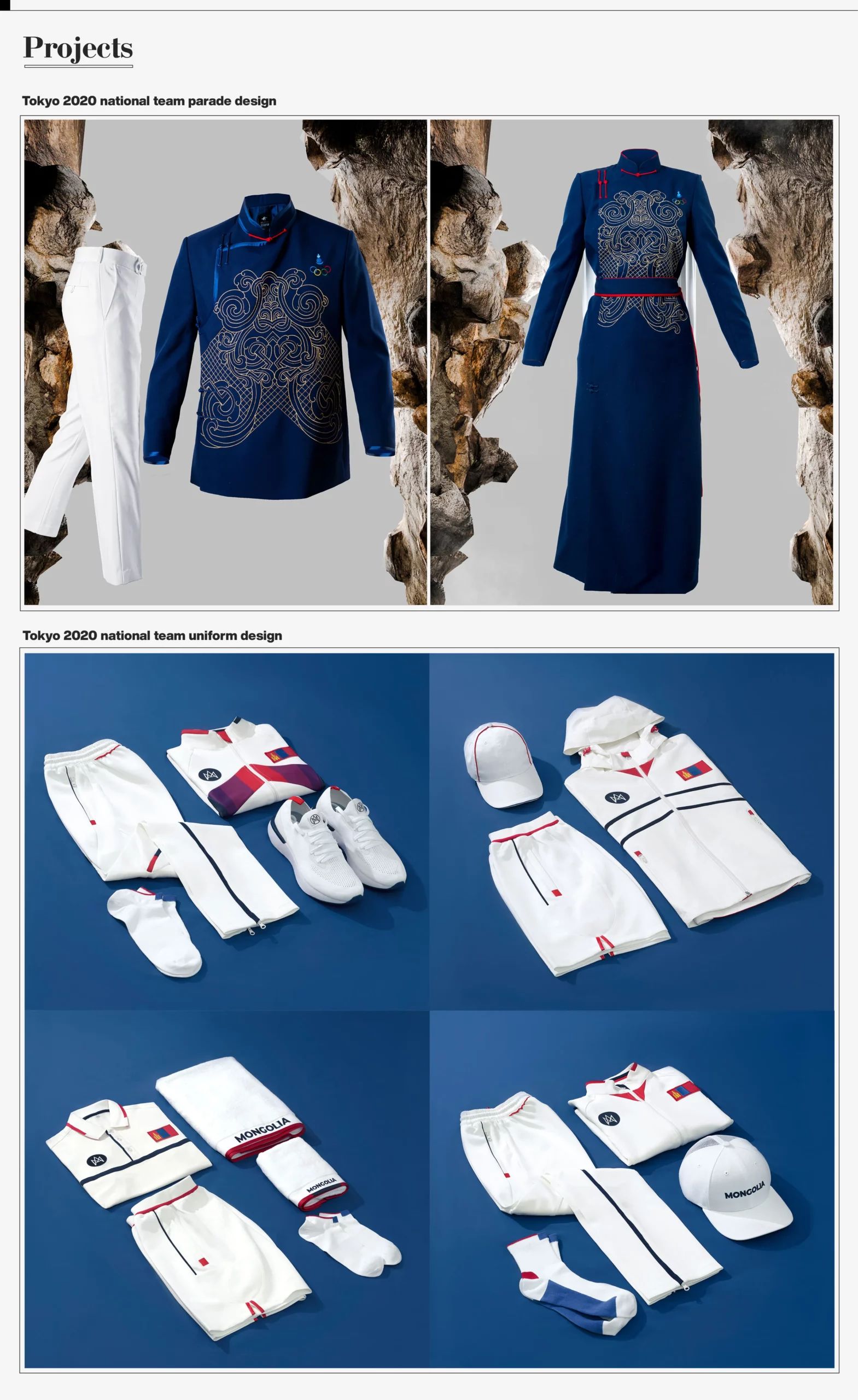
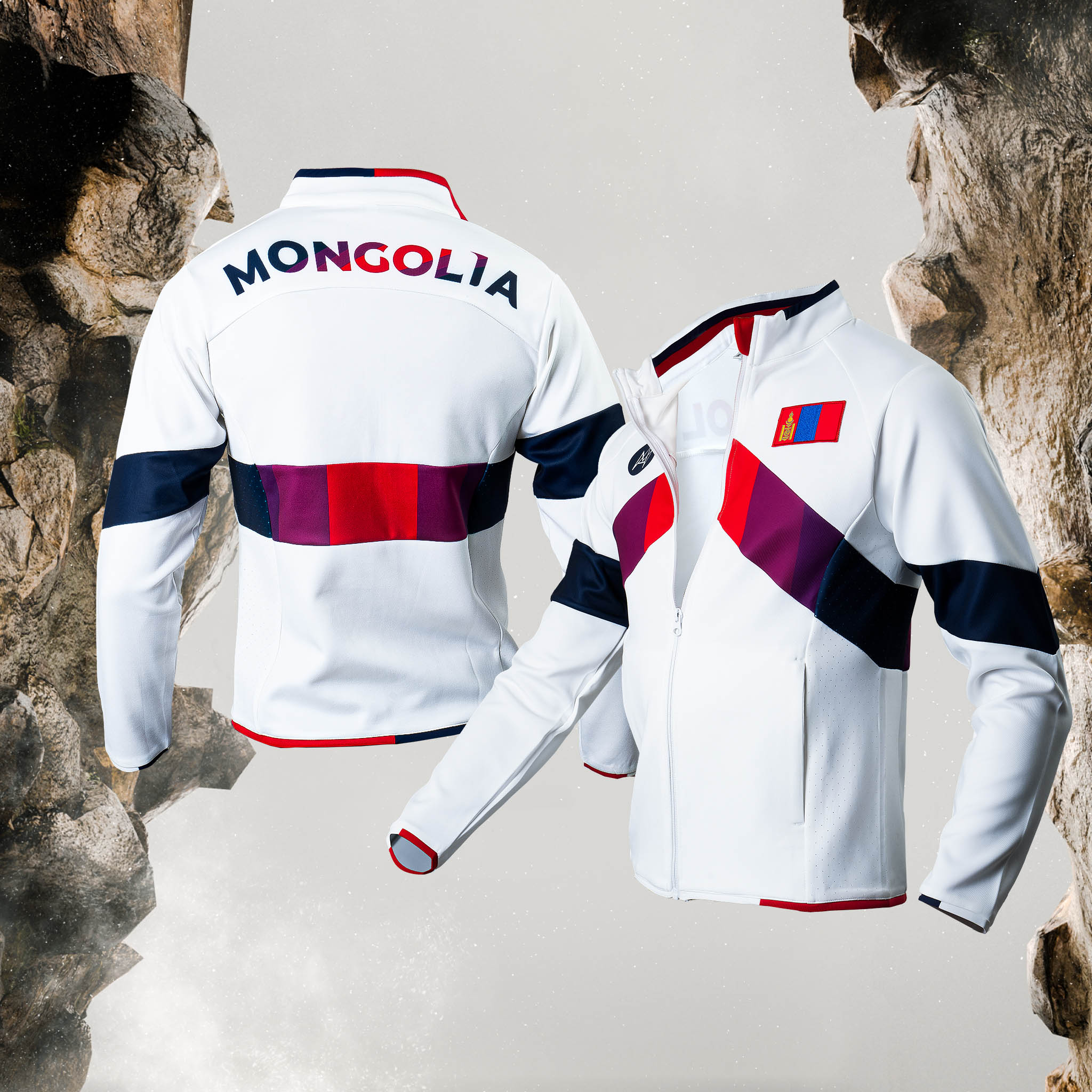
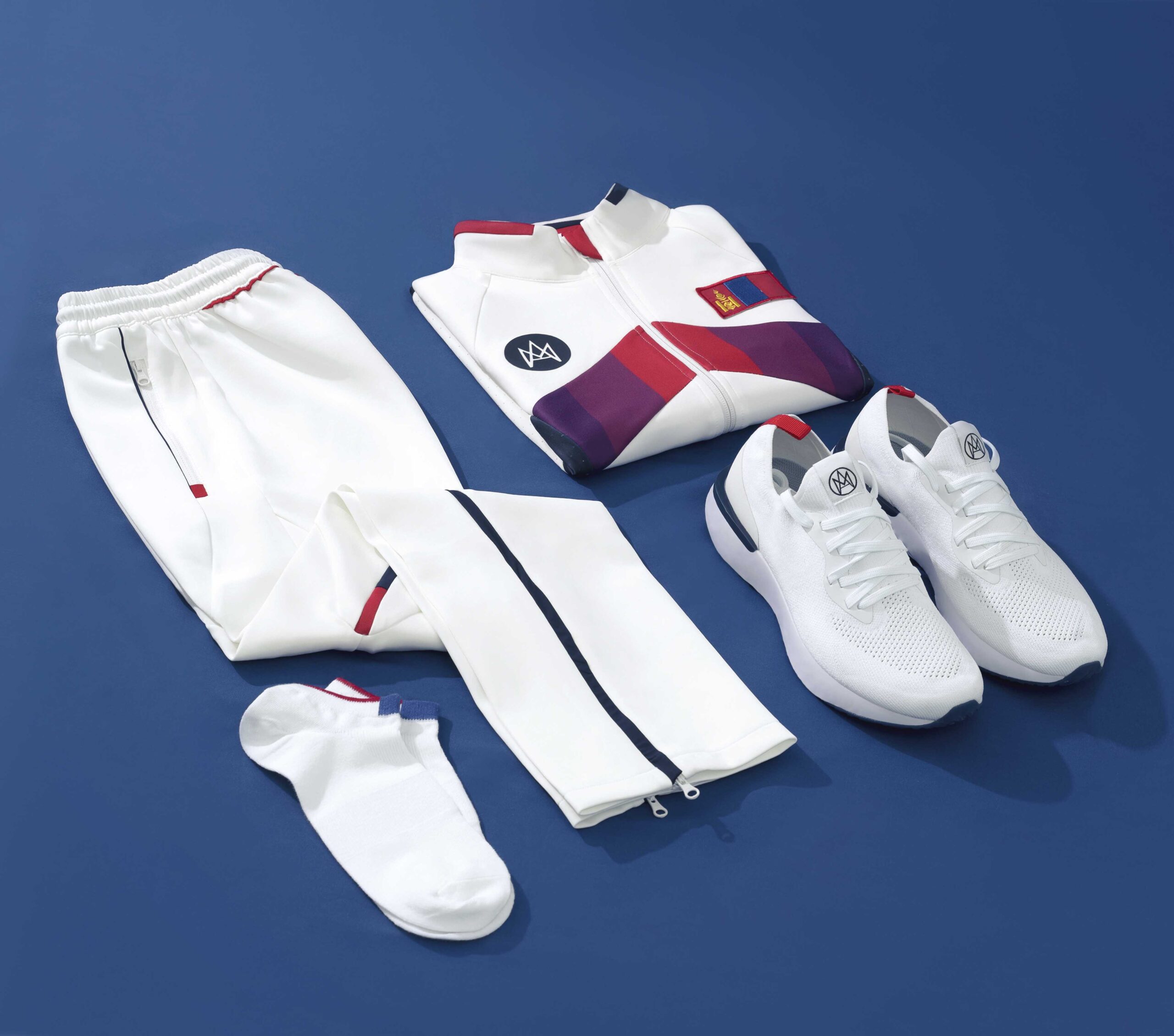
With the ambitious goal of becoming one of Asia’s top five music festivals by 2027, the Playtime Festival attracts 40,000-60,000 attendees, creates over 4,000 temporary jobs, and the most prominent modern fashion scene in Mongolia.
And cashmere, a luxury fiber with softness and warmth, has been highly coveted throughout history and Mongolia is known to be one of the world’s largest producers of cashmere..
